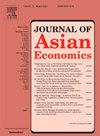How does fiscal policy affect green innovation development? Evidence from 30 provinces in China
IF 3.4
3区 经济学
Q1 ECONOMICS
引用次数: 0
Abstract
Green innovation development mode has emerged as a critical driver of high-quality development in China. Utilizing panel data from 30 Chinese provinces (2007–2023), this study investigates the role of fiscal policy on green innovation development (GID) with mediation and conditional process models. Our findings indicate that fiscal science and technology (S&T) expenditure significantly promotes GID, and this effect is most pronounced in regions with a robust digital economy policy, stronger intellectual property rights (IPR) protection, a talent-driven economy, and the central provinces. Meanwhile, Green technology innovation has a primary mediation effect, while green tax negatively moderates the mediating role of green technology innovation between fiscal S&T expenditure and GID. Furthermore, the threshold effect reveals that fiscal pressure can enhance the main relationship. Potential reasons are that the central government's green development orientation forces high-pressure local governments to generate new economic growth. This study contributes a deeper understanding of the dynamic interactions between financial resources, government behaviour and green innovation, providing valuable insights for optimizing policy frameworks. It also offers some references for other developing countries.
财政政策如何影响绿色创新发展?来自中国30个省份的证据
绿色创新发展模式已成为推动中国高质量发展的重要动力。本文利用2007-2023年中国30个省份的面板数据,运用中介模型和条件过程模型探讨了财政政策对绿色创新发展的影响。我们的研究结果表明,财政科技支出显著促进了科技创新,这种效应在数字经济政策健全、知识产权保护力度加大、人才驱动型经济的地区和中部省份最为明显。同时,绿色技术创新具有初级中介效应,而绿色税收负向调节了绿色技术创新在财政支出与企业创新之间的中介作用。此外,阈值效应表明财政压力可以增强主体关系。潜在的原因是中央政府的绿色发展导向迫使高压的地方政府产生新的经济增长。本研究有助于深入了解财政资源、政府行为和绿色创新之间的动态互动关系,为优化政策框架提供有价值的见解。对其他发展中国家也有一定的借鉴意义。
本文章由计算机程序翻译,如有差异,请以英文原文为准。
求助全文
约1分钟内获得全文
求助全文
来源期刊

Journal of Asian Economics
ECONOMICS-
CiteScore
4.70
自引率
9.40%
发文量
90
期刊介绍:
The Journal of Asian Economics provides a forum for publication of increasingly growing research in Asian economic studies and a unique forum for continental Asian economic studies with focus on (i) special studies in adaptive innovation paradigms in Asian economic regimes, (ii) studies relative to unique dimensions of Asian economic development paradigm, as they are investigated by researchers, (iii) comparative studies of development paradigms in other developing continents, Latin America and Africa, (iv) the emerging new pattern of comparative advantages between Asian countries and the United States and North America.
 求助内容:
求助内容: 应助结果提醒方式:
应助结果提醒方式:


